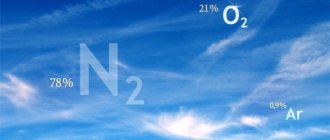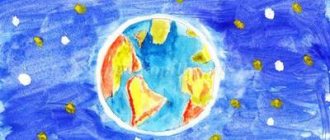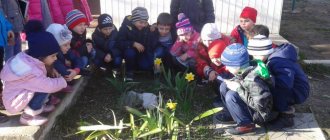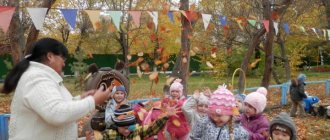Summary of experimental activities in the middle group “The Tale of Paper”
The professor brought us an envelope, what does it contain?Look, we have a fairy tale here, shall we listen?
Far away in a paper country they lived - there were Kartonych (a sheet of cardboard),
Leaflet (sheet of paper) and Fetochka (paper napkin).
And they had a dispute: “Who is more necessary and important among them.” They thought for a long time, and then they decided to find out everything on the journey.
And then on their way they met the Kitty. She wanted to play with the snow, but it was very cold. Friends offered their help to the cat.
Educator: Tell the guys: “How can I help the cat?
Experience: The guys try to make a snowball from three types of paper.
Experiment No. 1 » Let's crumple the paper
«
Invite the children to crumple paper, napkin and cardboard.
-Guys, was it easiest for us to crumple paper, napkin or cardboard? Why ?
Conclusion:
Paper snowball is the best. Cardboard is thick and difficult to fold. The napkin is very soft, tears quickly and does not hold its shape.
Experience No. 2 » Wrinkles, tears
«
— What happened to a piece of paper, cardboard, or napkin when we made a “snowball” out of it?
- What were they like before?
Now try to straighten our paper lumps.
— Has our paper become as smooth as it used to be?
You and I learned that paper wrinkles, but... does not straighten, does not smooth out.
I’ll tell you a secret, the paper can also rustle. Try to crumple the piece of paper and repeat after me the magic words: shi-shi-shi-paper rustle!
Listen now - is it rustling?
- Take our lump from a napkin and pull it in different directions.
- What happened?
- Was it difficult for you to tear the napkin?
Repeat with cardboard and paper.
- What did you do with the leaf?
Tell me, what was easier for you to tear cardboard, paper or napkin? Why?
Conclusion:
This means that thin paper breaks easily, it is not durable. Cardboard is durable and hard to tear.
The kitten said thank you. . Leaflet was proud that he helped.
The friends set off further on their journey, and they met a fox. She wants to drink from the stream, but does not know what to pour the water into.
Educator: Tell the guys: “How can I help the fox?
Guys, we can make a cup out of paper or a napkin or cardboard, but we need to find out which of this material can hold water better.
- Guys, what kind of water do we have, tell us about it?
-That’s right guys, the water is wet and that’s why you and I will now conduct an experiment and find out what kind of paper you have
It won't get wet for a long time.
Experiment No. 3 “Wet the paper”
Invite the children to wet the paper, napkin and cardboard.
Conclusion:
: A cardboard cup is the most convenient, thick, and does not let water through quickly. A glass made from a napkin and paper is not suitable, it gets wet quickly and leaks water.
The fox drank some water and said thank you and ran off into the forest. Kartonich is arrogant!
The friends set off further on their journey. They see a butterfly sitting on a stump and crying loudly, and its wings are stained with dirt. And because of this, she cannot take off, and the houses are already waiting for her.
Educator: Tell the guys: “How can you help a butterfly? (wipe the wings).
Experiment No. 3 “Let’s get some water wet”
Invite the children to wipe the stains on the table with paper, cardboard and a napkin.
- Guys, what was the most convenient way for you to wipe off the dirt? Why?
Conclusion
: The napkin is soft, wrinkles easily and wipes and absorbs better. Cardboard is rough and hard to wrinkle. Paper is less rough, but it is also inconvenient to wipe the table surface with.
Fetochka helped the butterfly put its wings in order. The butterfly thanked her and flew home. And Fetochka became proud, she is the most important.
The friends walked and walked through the mountains and forests, but they were never able to find out: “Which of them is the most necessary and important.” They walked, they walked, and met Professor Shar Sharych. He invited them to visit us. So that we help them. Let the children tell them why they are all very necessary and important to us.




